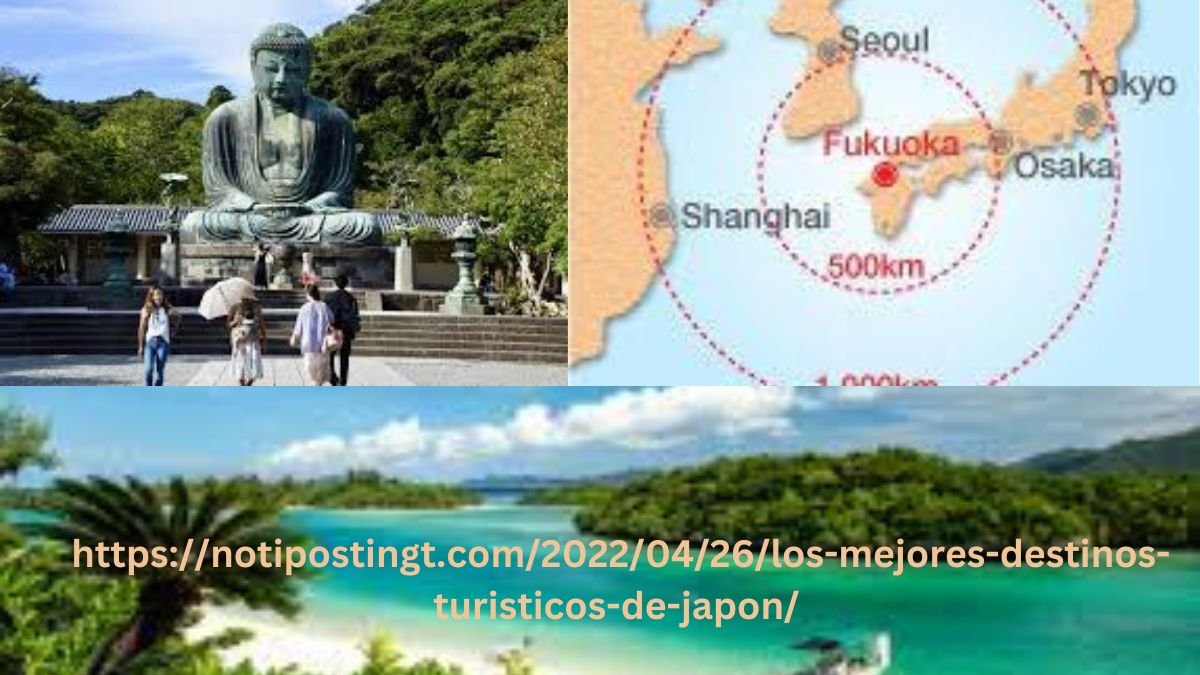Exploring Tokyo: The Heart of Modern Japan
As the capital city, Tokyo is a must-visit destination for any traveler to Japan. It’s a city that perfectly blends the ultramodern with the traditional. Skyscrapers and neon lights coexist with historic temples and tranquil gardens. For an authentic experience, visit the Asakusa district to see the famous Senso-ji Temple. For a taste of Tokyo’s contemporary side, explore Shibuya Crossing, one of the busiest pedestrian crossings in the world, or Akihabara, the hub for anime and electronics enthusiasts.
Kyoto: The City of a Thousand Temples
Kyoto, known for its well-preserved historic sites, offers a window into Japan’s ancient past. The city is home to over a thousand temples, including the iconic Kinkaku-ji (Golden Pavilion) and the serene Ryoan-ji Temple, famous for its rock garden. Kyoto’s Gion district is the place to experience traditional tea houses and perhaps catch a glimpse of a geisha. Don’t miss the beautiful Arashiyama Bamboo Grove, a perfect spot for a tranquil walk.
Osaka: Japan’s Kitchen
Osaka is often referred to as “Japan’s Kitchen” due to its culinary delights. The city is renowned for its street food, particularly in the Dotonbori district, where you can try takoyaki (octopus balls) and okonomiyaki (savory pancakes). Osaka also boasts impressive landmarks like Osaka Castle, a historical icon surrounded by a beautiful park. For families, Universal Studios Japan offers a day of fun and adventure.
Hokkaido: Nature’s Wonderland
For nature lovers, Hokkaido is a paradise. The northernmost island of Japan is known for its stunning landscapes, including the Furano flower fields, the dramatic Shiretoko Peninsula, and the beautiful Blue Pond in Biei. In winter, Hokkaido transforms into a wonderland, attracting visitors to its world-famous ski resorts, such as Niseko. The island’s capital, Sapporo, is known for its annual Snow Festival and delicious seafood.
Read Also : Downloading The Demon Slayer Season 1 Soundtrack in FLAC
Okinawa: Tropical Paradise
Okinawa offers a different side of Japan, with its tropical climate, crystal-clear waters, and laid-back atmosphere. The Okinawa Churaumi Aquarium is one of the largest in the world and a must-visit for marine life enthusiasts. The Ryukyu Islands, including Ishigaki and Miyako, are perfect for snorkeling, diving, and relaxing on pristine beaches. Okinawa’s unique culture and history, distinct from mainland Japan, provide an enriching experience.
Hiroshima: A City of Peace and Resilience
Hiroshima, known for its tragic past, has transformed into a symbol of peace and resilience. The Hiroshima Peace Memorial Park and Museum are somber yet essential visits to understand the impact of the atomic bombing. Nearby, the Itsukushima Shrine on Miyajima Island is famous for its “floating” torii gate, one of Japan’s most iconic images. Hiroshima’s local delicacy, okonomiyaki, offers a delicious culinary experience.
Nara: Ancient Capital and Deer Park
Nara, Japan’s first permanent capital, is rich in historic treasures. The city is home to Todai-ji Temple, which houses the Great Buddha, one of the largest bronze statues in the world. The surrounding Nara Park is famous for its friendly deer, which roam freely and can be fed by visitors. Nara’s ancient architecture and serene atmosphere make it a perfect day trip from Kyoto or Osaka.
Nagano
: Alpine Beauty and Winter Sports
Nagano is best known as a winter sports destination, having hosted the 1998 Winter Olympics. The Japanese Alps offer stunning scenery year-round, with popular spots like Kamikochi and the Tateyama Kurobe Alpine Route. In winter, the region’s ski resorts, such as Hakuba, attract snow enthusiasts from around the world. Don’t miss the chance to see the famous snow monkeys bathing in hot springs at Jigokudani Monkey Park.
Kanazawa: Art and Gardens
Kanazawa is a city that beautifully preserves the Edo period atmosphere. The Kenrokuen Garden, one of Japan’s most celebrated gardens, is a highlight of the city. Kanazawa is also known for its traditional crafts, such as gold leaf, and its historic samurai and geisha districts. The 21st Century Museum of Contemporary Art offers a contrast with its modern exhibitions.
Fukuoka: Gateway to Kyushu
Fukuoka, the largest city on the island of Kyushu, is a vibrant and modern metropolis. The city is famous for its Hakata ramen, a rich pork bone broth noodle soup. Fukuoka’s Canal City is a massive shopping and entertainment complex, while the Ohori Park offers a peaceful escape. The nearby Dazaifu Tenmangu Shrine and the ancient ruins of Fukuoka Castle add historical depth to the city.
Kobe: Cosmopolitan Port City
Kobe is known for its cosmopolitan atmosphere and beautiful harbor. The city’s multicultural influences are reflected in the Kitano district, where Western-style homes from the 19th century still stand. Kobe is also famous for its high-quality beef, known as Kobe beef. The Nunobiki Herb Garden and Rokko Mountain offer stunning views of the city and surrounding area.
Yokohama: A Blend of Tradition and Modernity
Just south of Tokyo, Yokohama is Japan’s second-largest city and a major port. The city offers a mix of traditional and modern attractions. The Yokohama Chinatown is the largest in Japan and a great place to explore Chinese cuisine and culture. The Minato Mirai 21 district is a modern waterfront area with shopping, dining, and entertainment. The Sankeien Garden provides a peaceful retreat with traditional Japanese landscapes and historic buildings.
Nagasaki: A City of History and Culture
Nagasaki has a unique history as one of the few Japanese cities that were open to foreign trade during the Edo period. The city’s diverse cultural influences are evident in the Glover Garden and Oura Church, the oldest Christian church in Japan. The Nagasaki Atomic Bomb Museum and Peace Park are poignant reminders of the city’s wartime past. Nagasaki’s Dejima, a former Dutch trading post, offers insights into Japan’s early international relations.
Kagoshima: Gateway to Sakurajima
Kagoshima, located at the southern tip of Kyushu, is known for its active volcano, Sakurajima. The city offers stunning views of the volcano, particularly from the Shiroyama Observatory. Kagoshima is also famous for its hot springs and Satsuma cuisine, which features local ingredients like sweet potatoes and kurobuta (black pork). The Kagoshima Aquarium and Sengan-en Garden are popular attractions.
Takayama: Preserved Edo Period Town
Takayama, located in the Japanese Alps, is renowned for its beautifully preserved Edo period architecture. The city’s Old Town is a maze of narrow streets lined with traditional wooden houses, sake breweries, and craft shops. The Takayama Festival, held in spring and autumn, is one of Japan’s most famous festivals, featuring elaborate floats and lively celebrations. The nearby Shirakawa-go, a UNESCO World Heritage site, is known for its unique thatched-roof houses.
Kamakura: Ancient Temples and Coastal Views
Kamakura, once the political center of Japan, is now a tranquil coastal town known for its historical and cultural sites. The city is home to the famous Great Buddha (Daibutsu), a massive bronze statue that stands over 13 meters tall. Kamakura’s numerous temples, such as Hasedera and Kencho-ji, offer serene gardens and beautiful architecture. The Enoshima Island nearby is a popular spot for beach activities and seafood.
Matsumoto: Castle Town and Mountain Gateway
Matsumoto is best known for Matsumoto Castle, one of Japan’s most beautiful and well-preserved original castles. The “Crow Castle,” as it is often called, is a stunning example of Japanese architecture with its black exterior. The city is also a gateway to the Japanese Alps, offering easy access to outdoor activities such as hiking and skiing. The Kamikochi region, known for its breathtaking alpine scenery, is a popular destination for nature enthusiasts.
Read More : Blog Mickey Discovering Disney Magic and Theme Park Adventures











